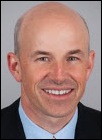News 7/5/11
The top struggle for medical practice managers: preparing for reimbursement models that place a greater share of financial risk on practices. Other pressing concerns, according to the results of MGMA’s annual member survey, include participation in the Meaningful Use incentive program, dealing with rising operating costs, selecting and implementing an EHR, and implementing or optimizing an ACO.
A report in JAMIA concludes that the error rate with e-prescribing is similar to that of handwritten scripts. Mr. H weighs in on the study on HIStalk, pointing out that the data came is a bit dated (from 2008); researchers could not make any conclusions on particular e-prescribing or pharmacy systems; and, the study did not assess how practices implemented the technology or how physicians were trained to use them. I haven’t seen the full study so I will defer to Mr. H and his lukewarm assessment, though I wouldn’t mind seeing a similar study based on today’s ever-growing use of e-prescribing (68 million e-rxs in 2008 versus 326 million in 2010.)
Wisconsin Health Information Technology Center identifies six Value Vendors for its REC program, including athenahealth, Cerner, eClinicalWorks, e-MDs, Greenway Medical, and McKesson.
Please join me in welcoming and thanking Bulletin Healthcare as HIStalk Practice’s newest Platinum Sponsor. Bulletin is all about providing medically relevant news to healthcare professionals, including 400,000 physicians a day. The company sends eNewsbriefings on behalf of two dozen medical associations, as well as to the President, the majority of US cabinet members, and a whole lot of Fortune 500 execs. If you are a vendor interested in connecting with Bullentin’s large healthcare audience, check out the company’s advertising opportunities. We appreciate their support of both HIStalk Practice and HIStalk.
gloStream adds Health Network Solutions as a certified partner to sell and support gloStream’s EMR and PM software.
NextGen parent company Quality Systems wins three Stevie awards in the following categories: Investor Relations Campaign/Program of the Year; support staffer of the Year; and, Live Event: Best Internal Recognition/Motivational Event for the NextGen Users Group Meeting. CEO Steven T. Plochocki (left) looks pleased.
Happy Independence Day, if you are still celebrating. It’s obviously a slow news day, as evidenced by the fact that the only HIStalk-related e-mail I received today came from one of our Canadian sponsors. I found this photo I took a few years back when I celebrated the holiday in DC. Definitely the best fireworks display I’ve ever witnessed and the best city to be in if you prefer to reflect more on Independence than on hot dogs – and don’t mind sticky, hot, humid weather. Wherever you are and whatever you are choosing to celebrate, have fun and be safe.








The article about Pediatric Associates in CA has a nugget with a potentially outsized impact: the implication that VFC vaccines…